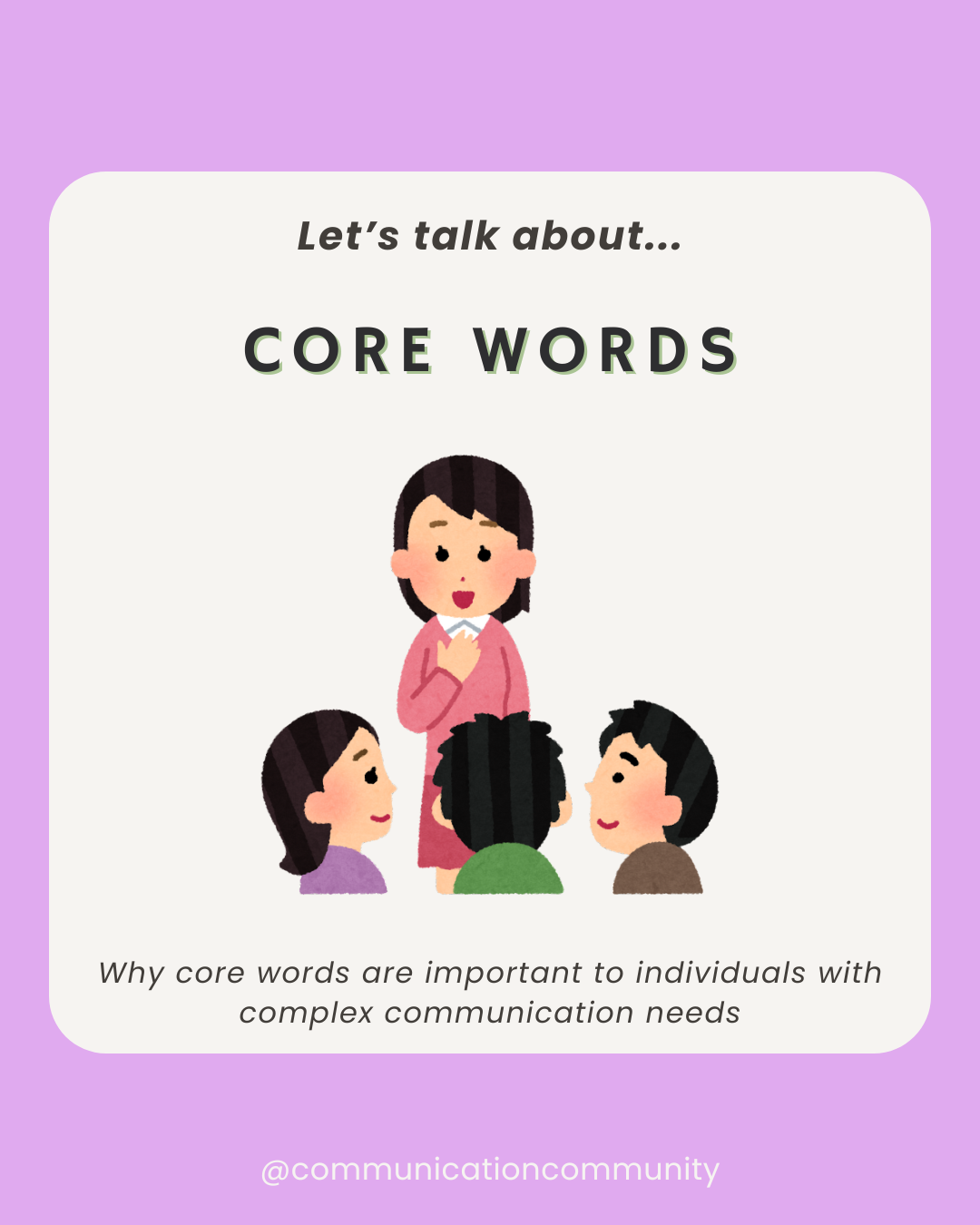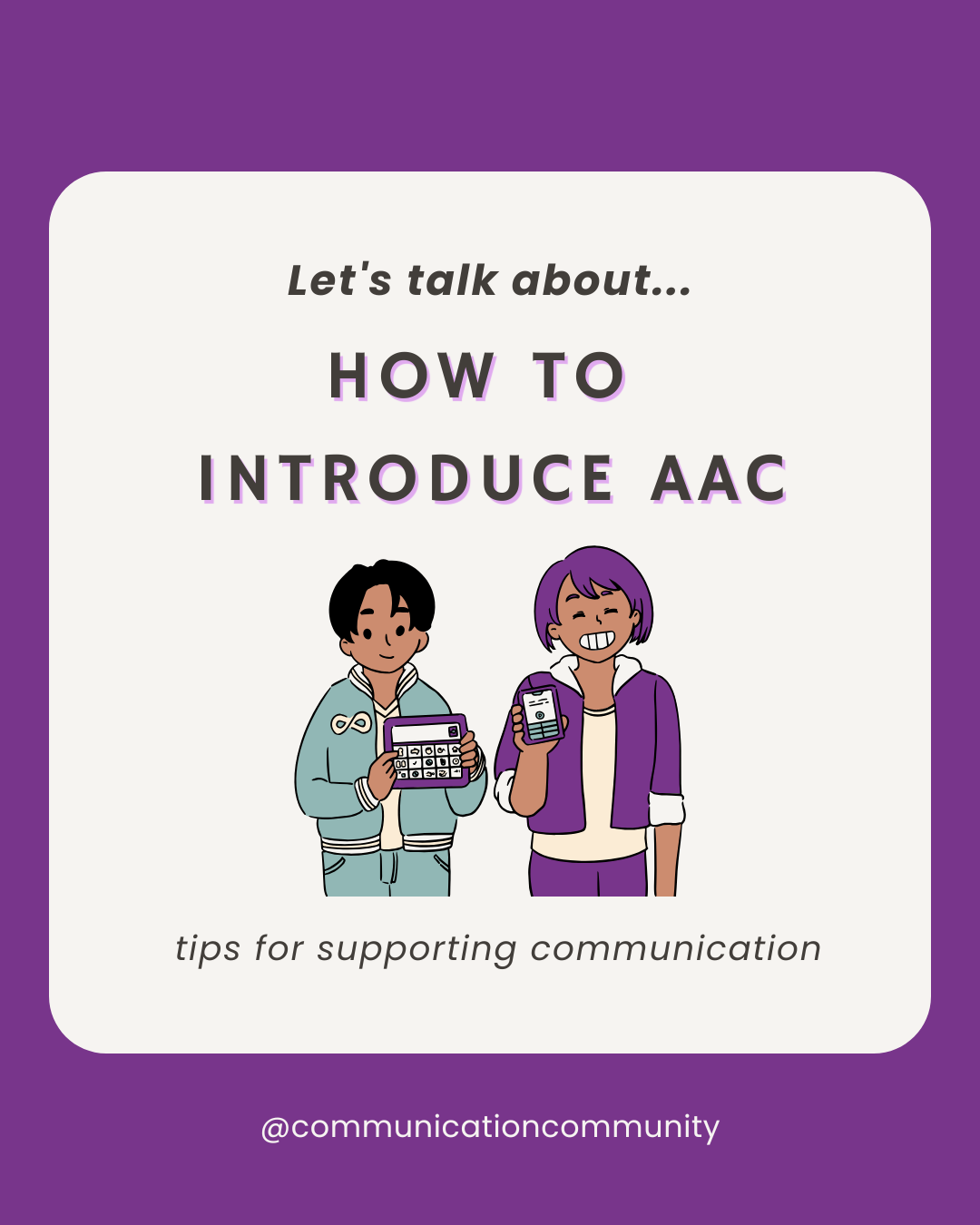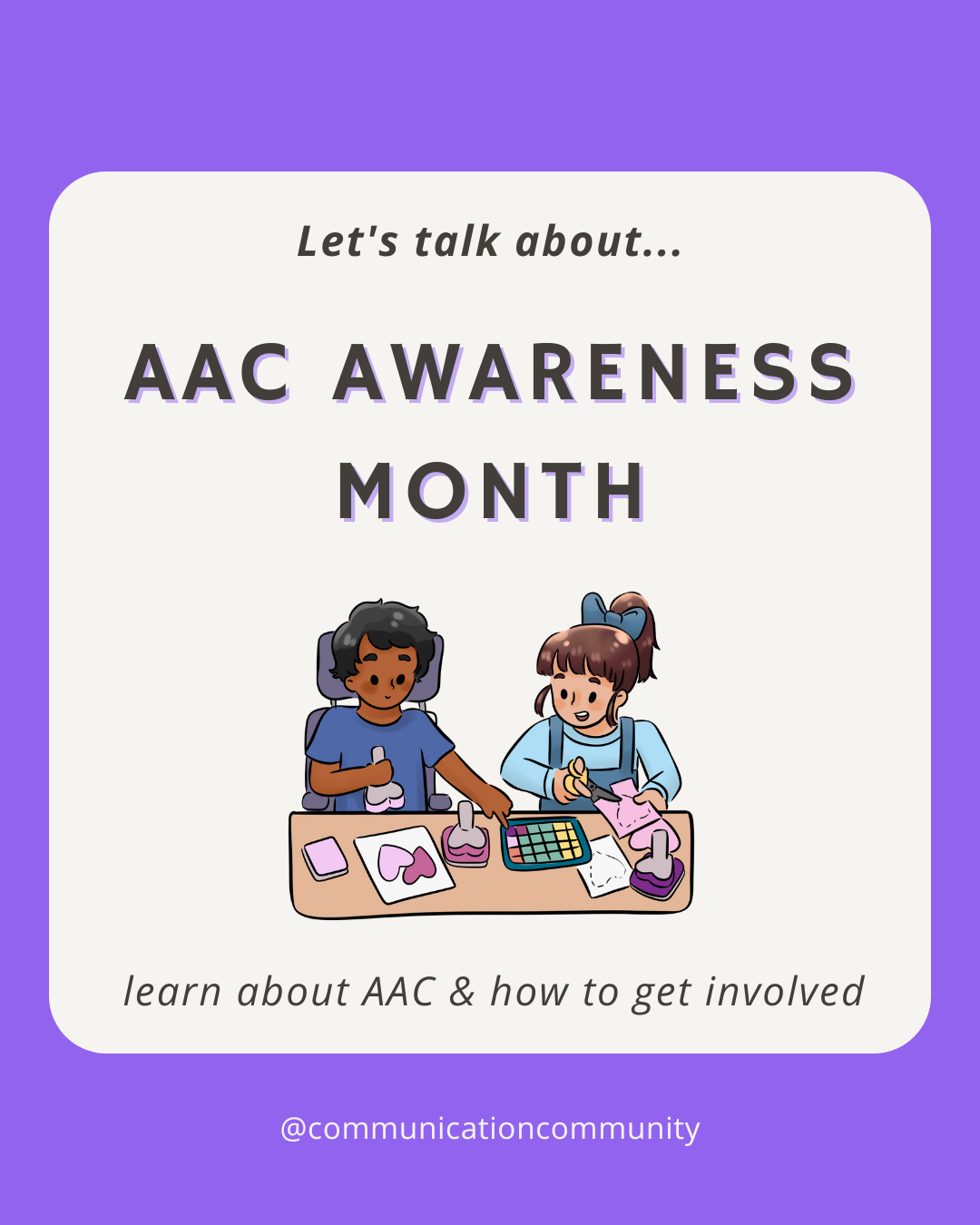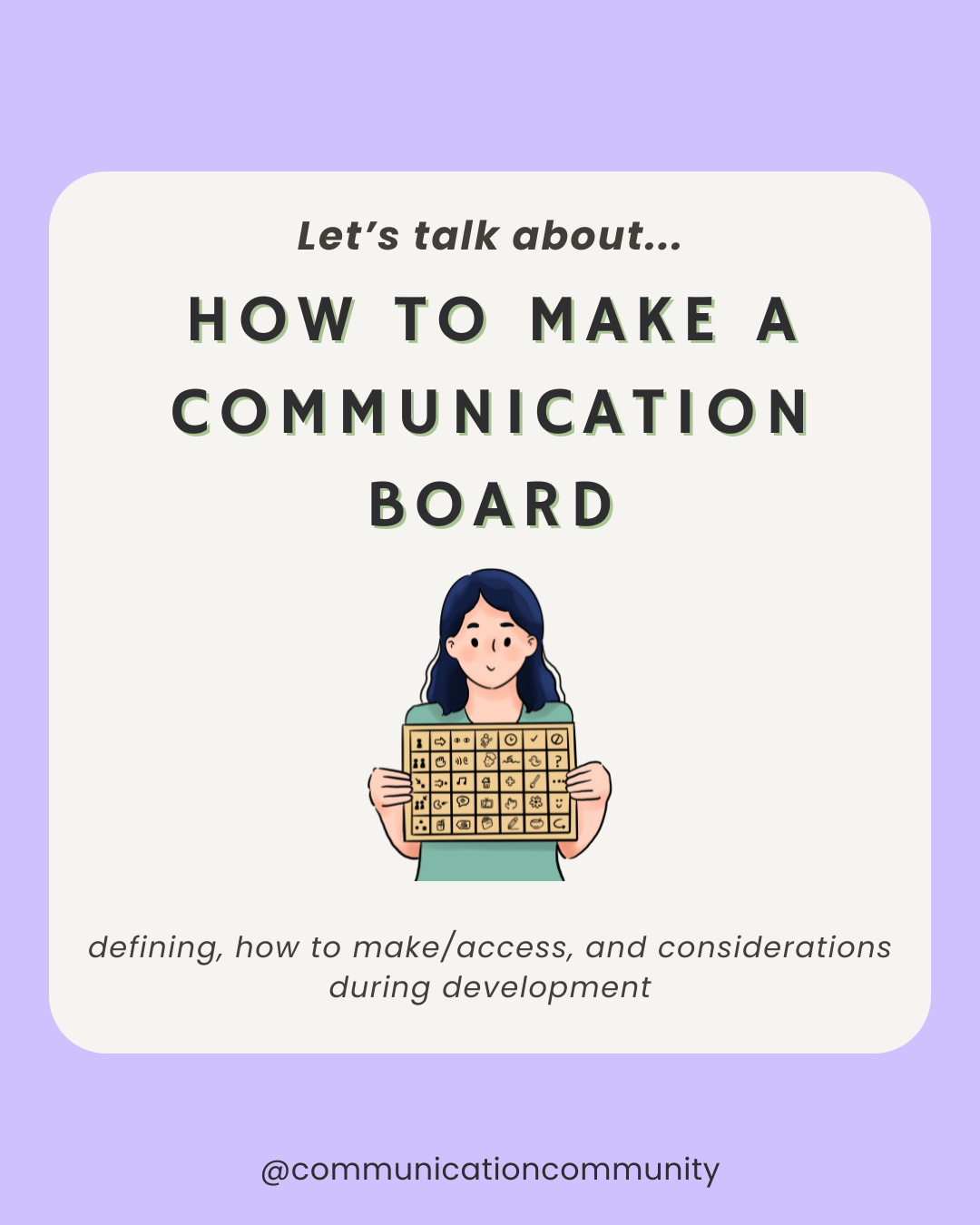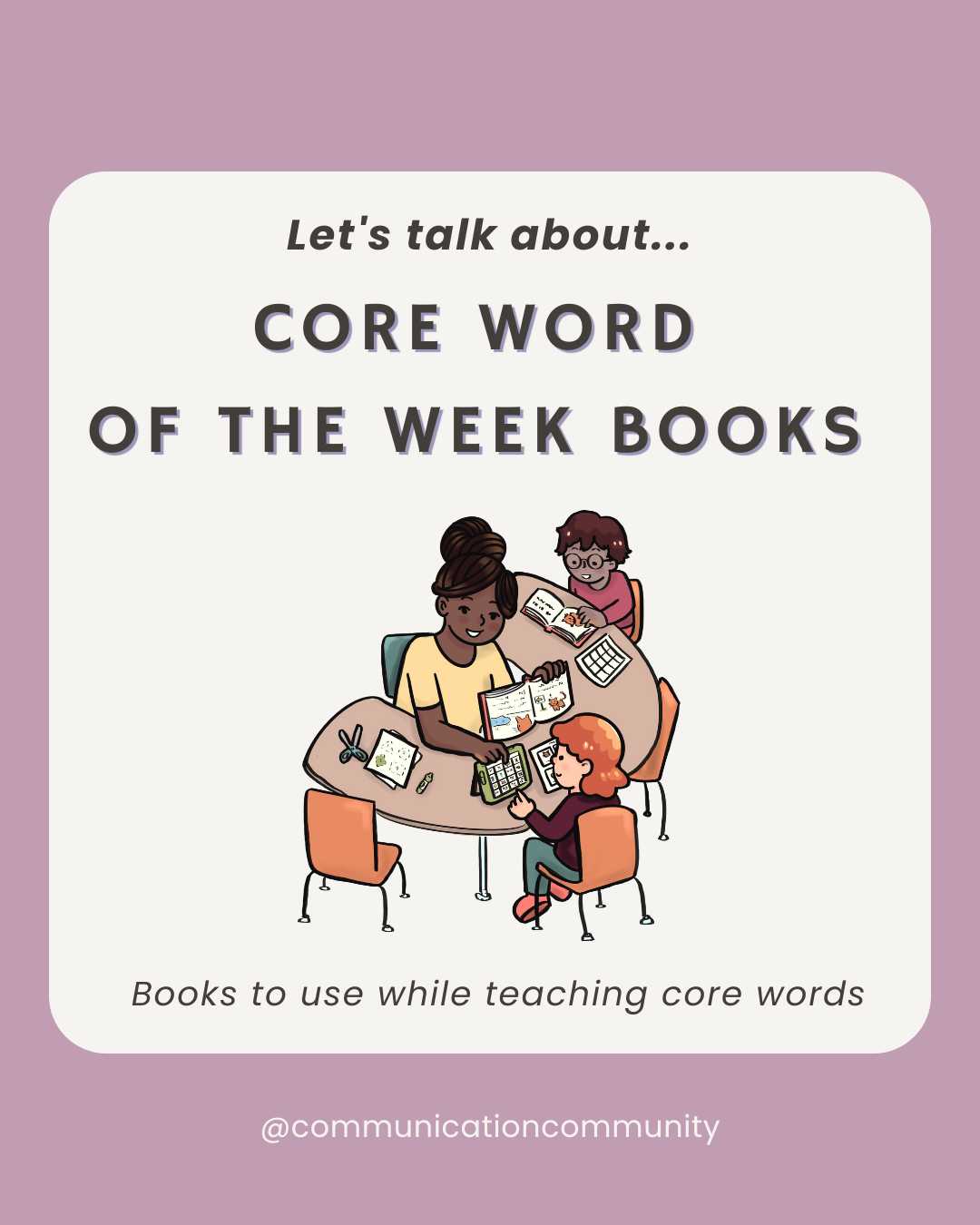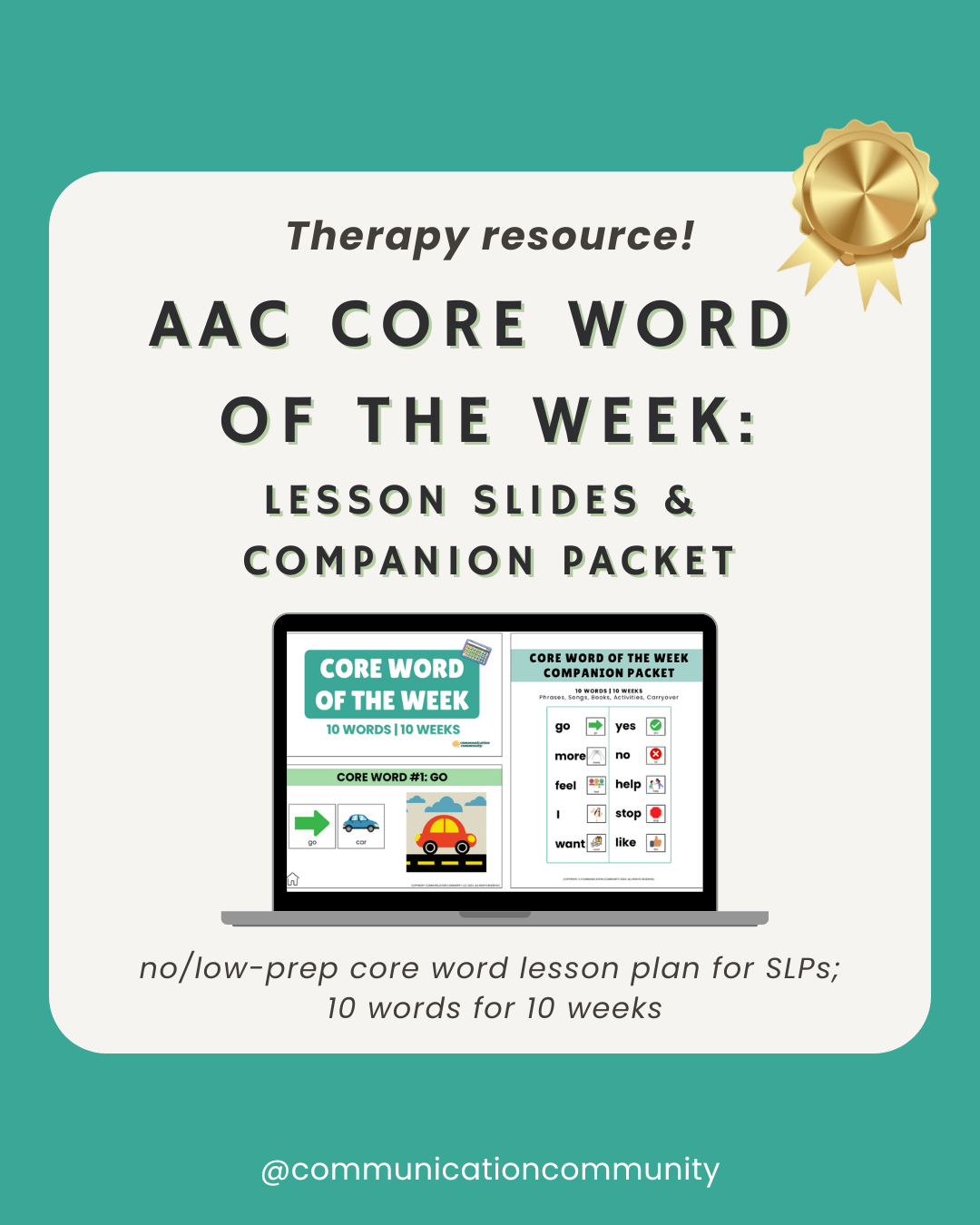Core words or core vocabulary refers to the language that we use most frequently in our day-to-day communication.
Mastering core words is essential for effective communication, especially in speech therapy and when focusing on augmentative and alternative communication (AAC), as these high-frequency words account for the majority of our daily interactions.
If you think about all of the vocabulary we have stored in the language cortex of our brain, core words make up a teeny tiny portion of our adult lexicon. However, core words account for approximately 60 - 80% of the words that we say every day! Core words can include many types of language (e.g., pronouns, prepositions, adjectives, verbs, etc.) but limited use of nouns. Usually, each typical individual’s repertoire of core words is only about 200 total words and can generally differ between individuals. However, in many cases, the majority of core words that one person uses is very similar to that of another person. Like the word “I” for example - you know we all say that a lot! Some other common core word examples are included below:
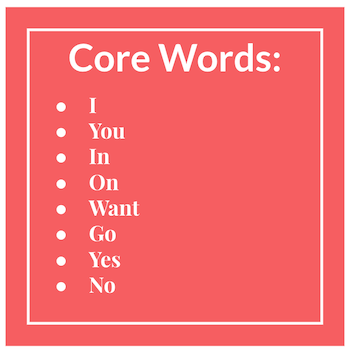
Why do we use core words more than other words?
Well, core words are usually flexible and conceptual; implying that the meaning of the word is relevant across multiple contexts. For all of the caregivers, SLPs, and educators out there, that also means that this presents more teaching opportunities for your emerging language learner (don’t you worry, we will talk more about this later).
Take the core word “go” for example: think about how many opportunities you have to say “go” each day (e.g., “I need to go to the grocery store today”, “Are you going to the after school event?”). These days, our phrases sound a little more like, “I want to go on trips again!” or “Where can we go that’s not too crowded?” or “I have to go take a shower (?)” ... Even though many of us may not be going many places these days, the word “go” remains very relevant across many (ever changing) situations and contexts.
⭐ Looking for ready-to-go AAC and core word resources?



Get over 90 pages of lesson slides & an accompanying instructional packet for 10 CORE WORDS! Available on TPT or included with the Premium Community membership!

A fringe word or fringe vocabulary refers to what we call the other, non-core words. It accounts for approximately 20 - 40% of the words we say every day. Fringe words are typically more noun-based and specific to the individual. Like, “sailboat” or “watermelon.” Yeah, you are going to say those words every once in a while, but the frequency and context for which you can use these words is much lower. If there was a running word list of one’s vocabulary, the word “go” would likely be MUCH more frequently occurring than “sailboat.” A word like “sailboat” is only used within a few contexts, whereas “go” or “I” can be used across many different contexts.
If you would like to learn more about core vs. fringe words, the YouTube channel Language During Mealtime provides an informative short with examples and visuals (see below)!
Why are core words important for AAC users?
More and more research has suggested that core words should be taught to individuals with complex communication needs (CCN). This also supports why many augmentative and alternative communication (AAC) systems and software utilize this approach. The AAC communication software Proloquo2go, for example, contains vocabulary templates that primarily focus on core words and core word development.
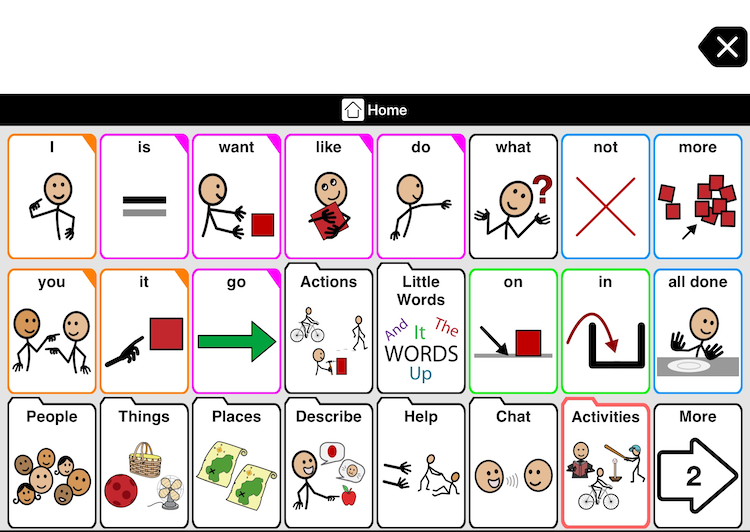
As you can see, core words take up a good portion of the buttons on this home page, which makes sense considering these words can be used frequently across the most contexts. Core word focus using AAC systems allow users to have access to more flexible language that can be used and combined in a variety of ways. Many self-advocacy words/phrases and similar language are also incorporated into core word instruction (e.g., “help” , “I want”). As AAC users acquire more core vocabulary, they can learn to string words together with other core or fringe words (e.g., “I need help” ; “I want to go outside”). Yay for morphosyntax development and grammatical structure!
If too many pre-programmed phrases (e.g., “I want to play with the race car”) take up the majority of the single buttons on an AAC device, this can limit an individual’s access to learning grammar and sentence structure. In this case, one may rely too heavily on scripts and the single applicable context in which they can use the phrase. So, it is interpreted as more cause and effect (I can press this button and I get my car!) and void of actual meaning (“I want” is a carrier phrase for access to all of the things/people/places I enjoy!). It is not to say that preprogrammed phrases serve no purpose on AAC devices. They can actually be quite helpful and increase efficiency navigating and relaying a message! But maybe think about programming this button once the individual has developed independence communicating the message using a multitude of buttons.
Now that we have discussed and provided some core word examples, we would love to hear what core words you have found to be most apparent in your vocabulary (comment below)! Is it similar to other individuals with whom you communicate on a daily basis? What about your child or the students you treat?
If you are working with a core word and/or AAC learner, try to single-out one core word, like “drink” or “eat.” Track how many opportunities you have to model that word within a natural context. Even further, track how many opportunities you have to combine that core word with other words.
Let’s build more language with core words, together!
References/further resources:
https://www.aacandautism.com/assets/uploads/Core_Word_of_the_Week.pdf
https://aacinstitute.org/core-vocabulary-and-the-aac-performance-report/
http://corevocabulary.weebly.com/
https://praacticalaac.org/strategy/join-together-core-fringe-vocabulary/
https://www.cornwall.gov.uk/media/37627255/core-and-fringe-vocabulary.pdf

